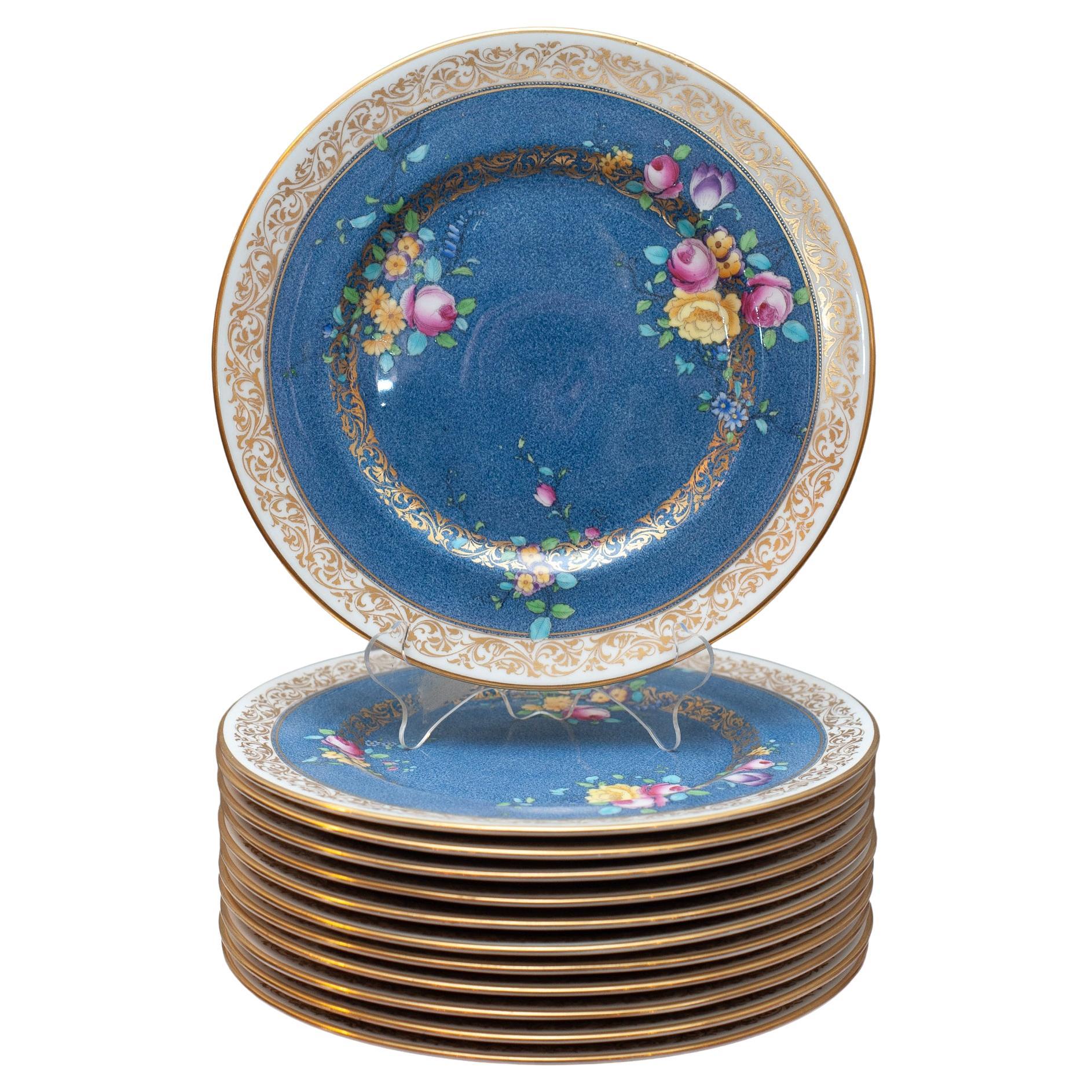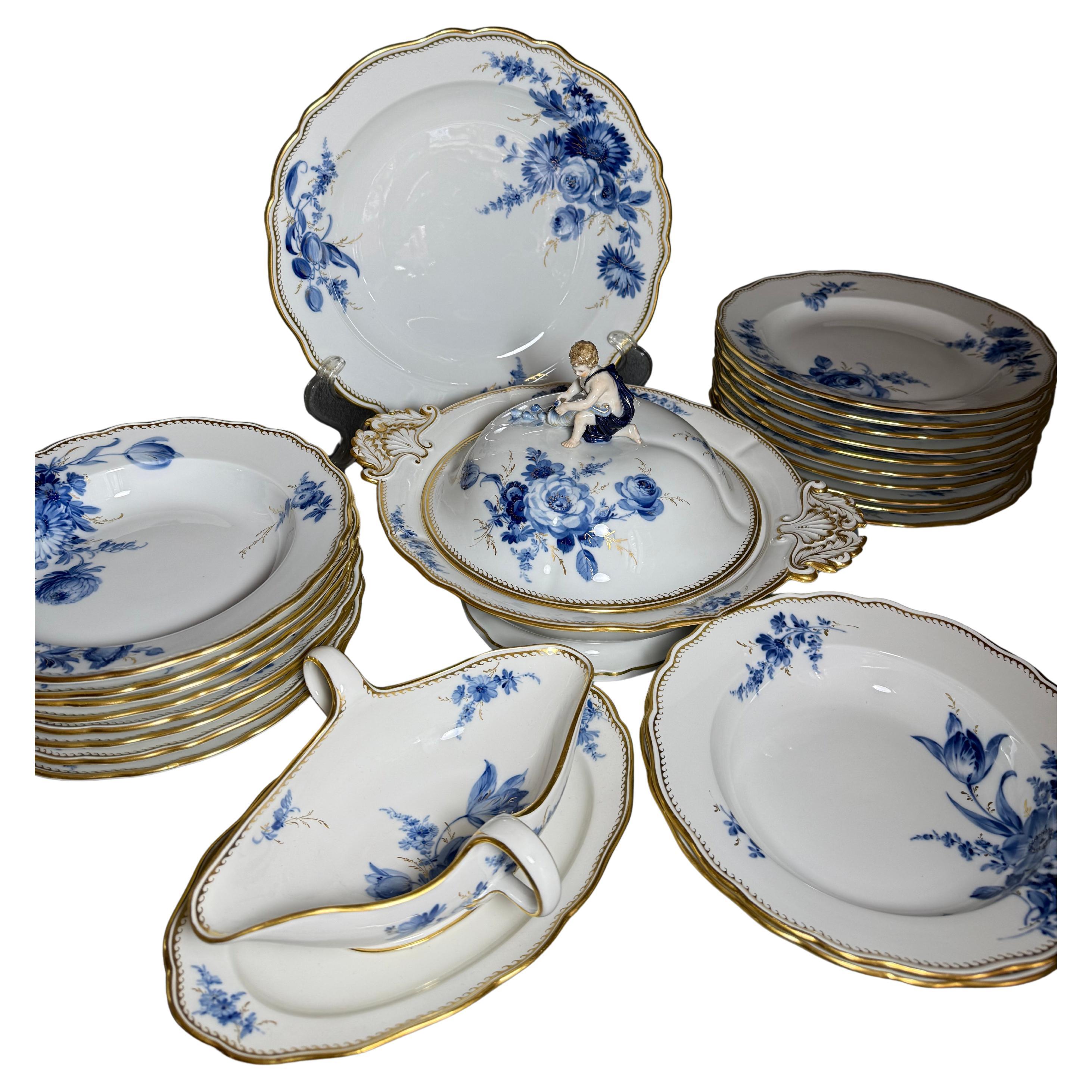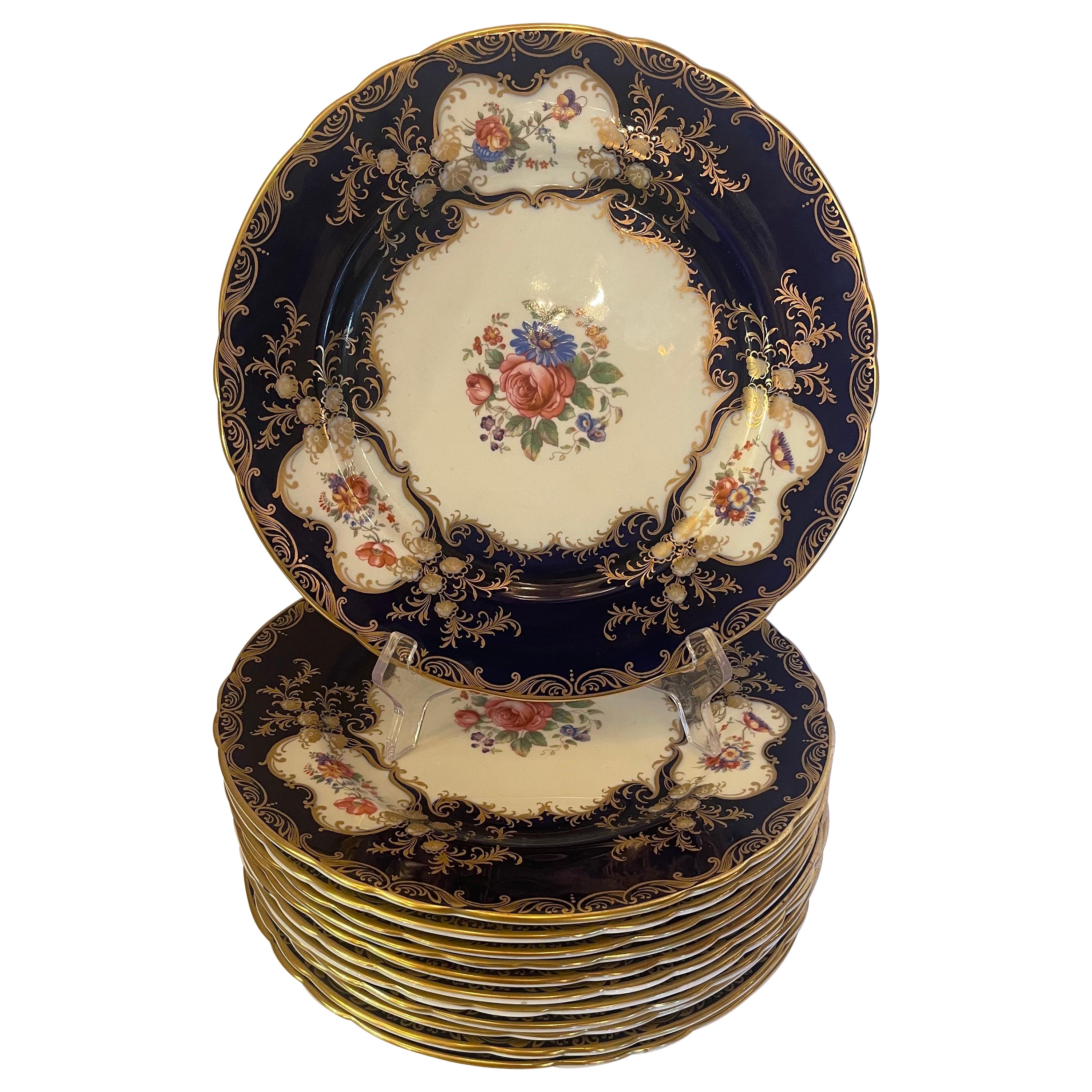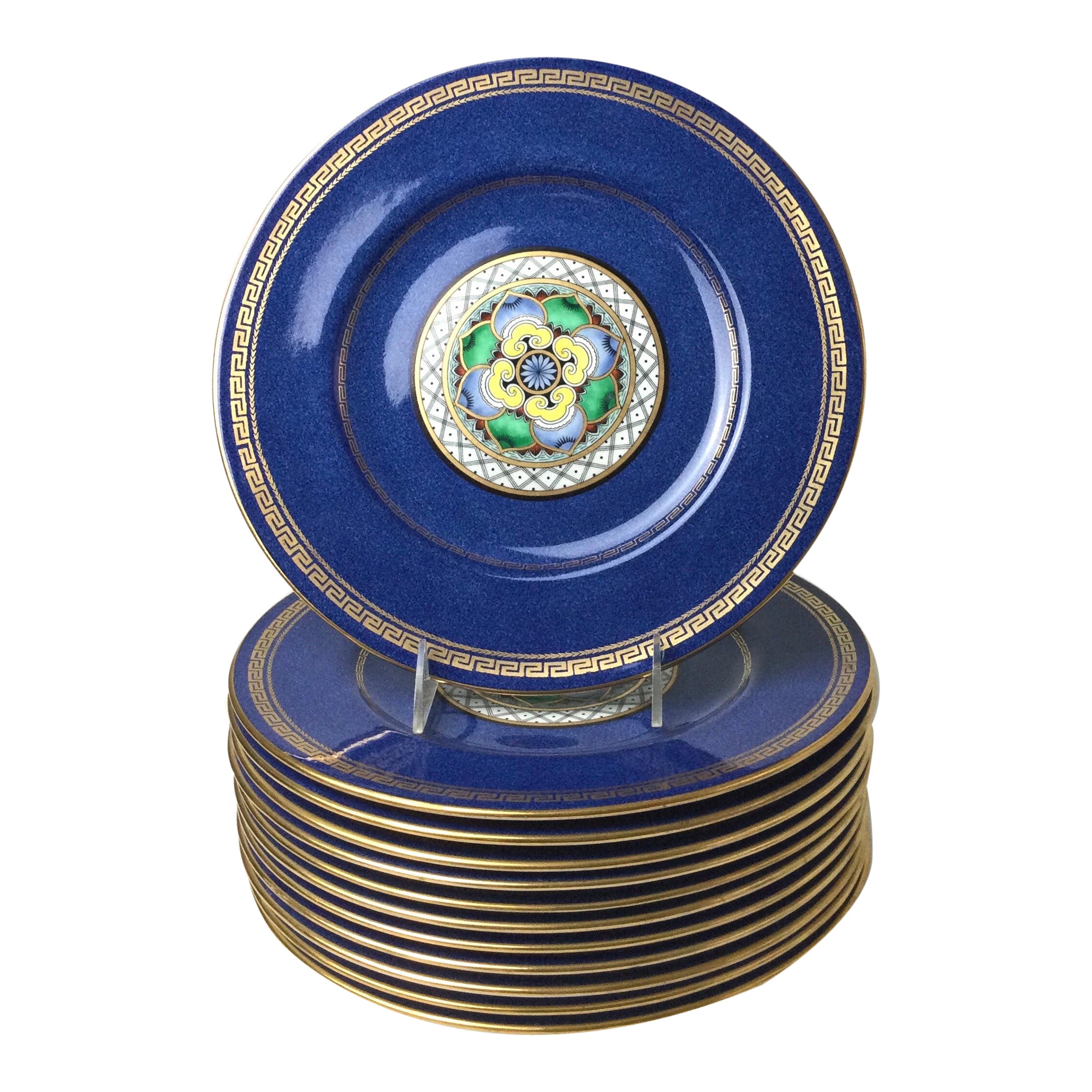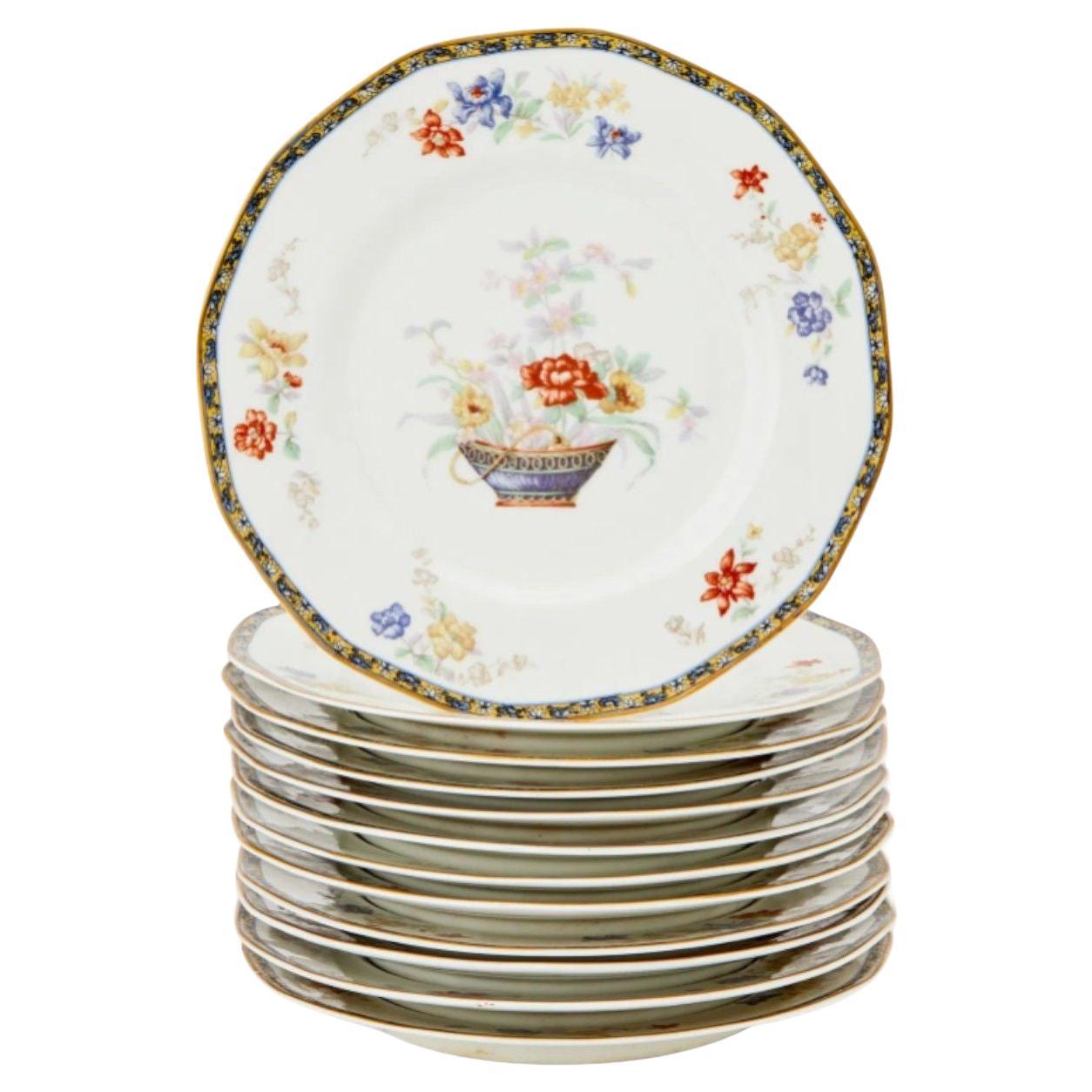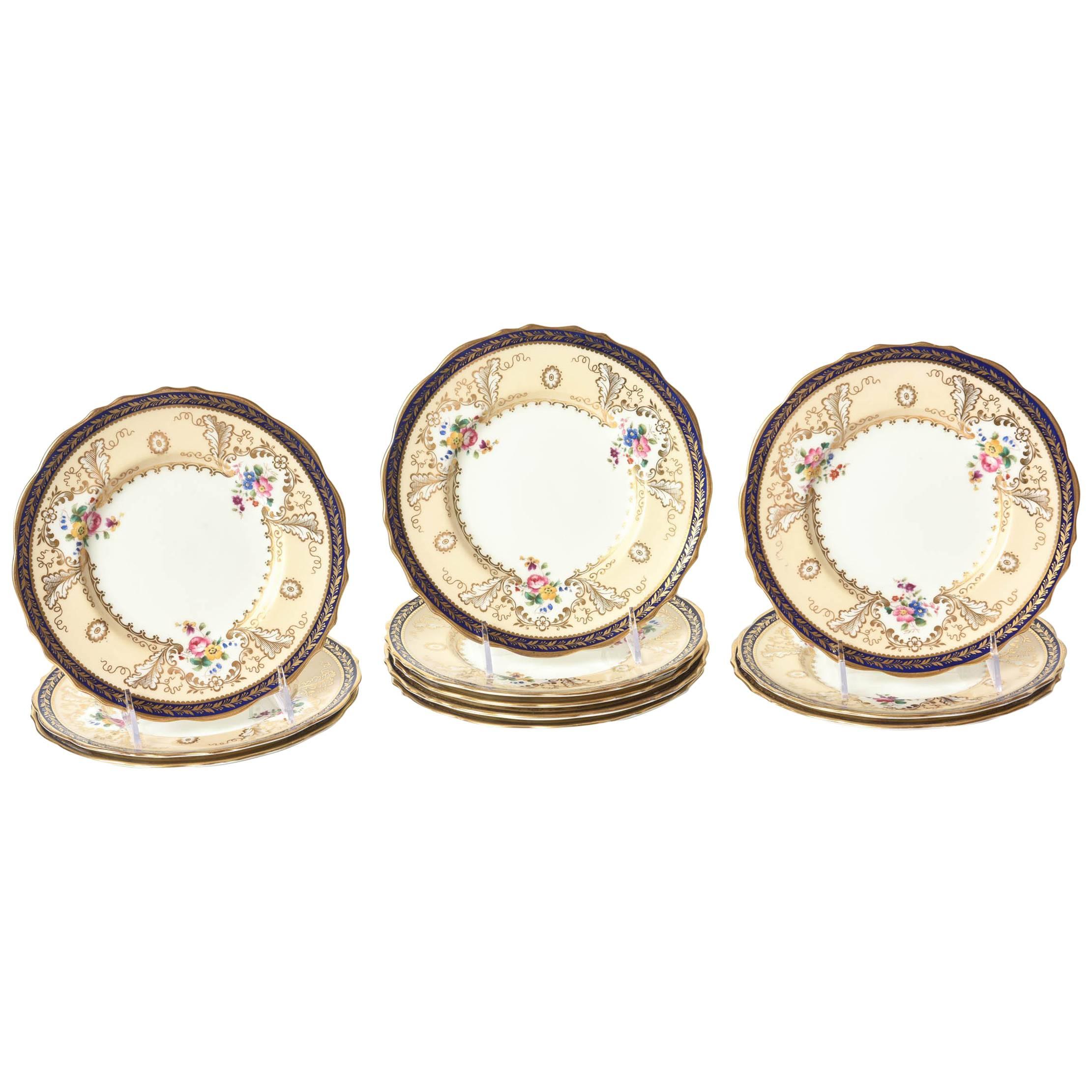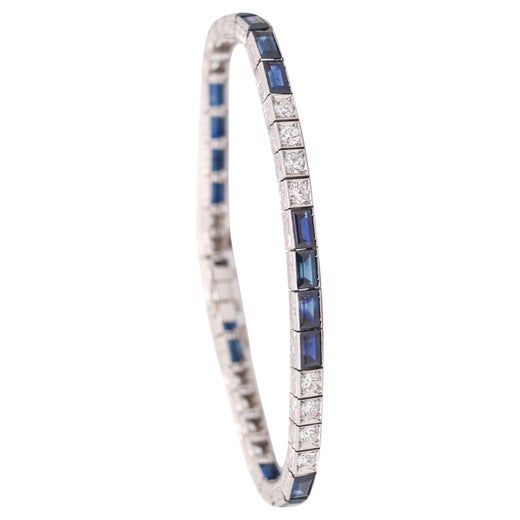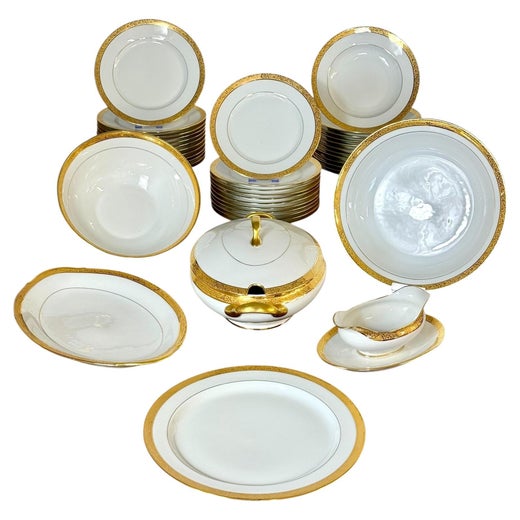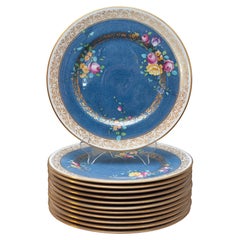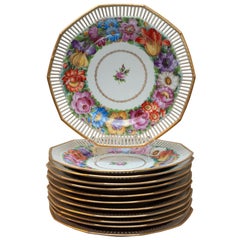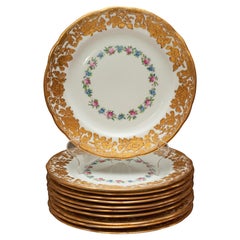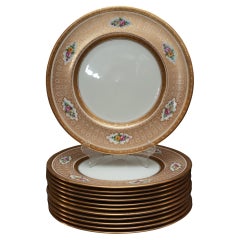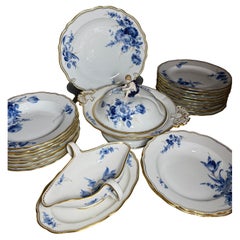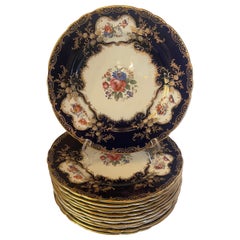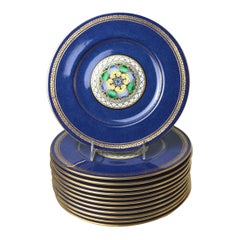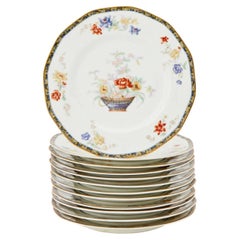Antique Set of 10 Blue Floral Limoges Dishes for J.E. Caldwell
About the Item
- Creator:Limoges (Manufacturer),J.E. Caldwell & Co. (Retailer)
- Dimensions:Height: 0.5 in (1.27 cm)Diameter: 10 in (25.4 cm)
- Sold As:Set of 10
- Materials and Techniques:
- Place of Origin:
- Period:
- Date of Manufacture:Circa 1915
- Condition:Wear consistent with age and use.
- Seller Location:Toronto, CA
- Reference Number:1stDibs: LU5379235184222
J.E. Caldwell & Co.
With intricate and refined artistry, the jewelers at J.E.Caldwell & Co. have been handcrafting illustrious watches and adornments — including cocktail rings, engagement rings and link bracelets — for nearly two centuries. The American firm, which is among the oldest silver and jewelry companies in the United States, has found acclaim with collectors and buyers worldwide.
Born in Poughkeepsie, New York, J.E. Caldwell & Co. founder James Emmott Caldwell (1813–81) apprenticed as a silversmith and subsequently trained in watchmaking under the esteemed watchmaker Samuel Ward Benedict in New York City. Following his apprenticeships, Caldwell sought work in Philadelphia, initially securing a position with a wholesale jeweler before importing watches for a jewelry manufacturer. In the late 1830s, he established a storefront of his own, in a stately marble building on Chestnut street. Caldwell partnered with James M. Bennett thereafter in order to launch a jewelry shop nearby that they called Bennett & Caldwell. With the passing of Bennett, Caldwell partnered with a former employer, John C. Farr, and changed the company name, establishing the J.E. Caldwell & Co. of today.
In 1876, Philadelphia hosted the first World’s Fair held in the United States. Alongside the Gorham Manufacturing Company — a legendary but largely overlooked American silver firm — J.E. Caldwell showcased an array of stunning jewelry and silver objects at the event’s Centennial International Exhibition. In the early 1900s, J.E. Caldwell was contracted to fashion a presentation silver tea service — more than 160 pieces — for a newly commissioned battleship, the U.S.S. Pennsylvania. The brand’s exquisite silver wares traveled at sea aboard this battleship — and later, on the U.S.S. Valley Forge — for decades.
J.E. Caldwell & Co. became known for exquisite Art Nouveau and Art Deco jewelry. Ownership of the firm passed through the family over the years before changing hands to business interests outside of the family. Today a J.E. Caldwell & Co. retail location continues to operate in Philadelphia.
Find antique and vintage J.E. Caldwell & Co. jewelry on 1stDibs.
Limoges
Limoges porcelain has withstood the test of time for centuries. The widely cherished ceramics named for the French city and commune in which they are made are synonymous with sophistication, elegance and refinement. Today, antique Limoges dinnerware, serveware, decorative objects and other porcelain products are coveted and collected all over the world.
The story of Limoges porcelain, which refers to porcelain made in the Limoges region of France — not by a specific factory — begins in 1768. The region is a rich source of kaolin, feldspar and quartz — vital ingredients to the production of this type of pottery.
Porcelain was first made in China and spread all over the world owing to the trade routes to the Far East established by Dutch and Portuguese merchants. Given its origin, English speakers called porcelain “fine china,” an expression you still might hear today. "Fine" indeed — for over a thousand years, it has been a highly sought-after material. Meissen Porcelain (Staatliche Porzellan-Manufaktur Meissen), which was founded in the Electorate of Saxony (now Germany), is one of the preeminent porcelain factories in Europe and was the first to produce true porcelain outside of Asia.
Limoges porcelain refers to porcelain produced in and near the city of Limoges — it does not refer to a specific manufacturer — and it’s distinctive for its luminous hue and bright white qualities, providing an ideal canvas for intricately detailed hand-painted decorations. (Revered Impressionist painter Pierre-Auguste Renoir began his career painting plates in Limoges.)
It wasn’t long before Limoges porcelain captured the attention of King Louis XVI — the region’s first manufactory, established toward the close of the 18th century, was placed under the protection of the King’s brother, the Comte d’Artois. It was later purchased by the King and became Manufacture Royale de Limoges. The facility produced a variety of pieces, including delicate, gold-embellished trinket boxes, ornamental vessels, Rococo-style figurines and elaborate dinnerware service sets.
Following the end of the French Revolution in 1794, Limoges porcelain was no longer restricted, and the commercial porcelain industry ballooned.
By 1819, Limoges had four porcelain factories, and as demand for porcelain grew during the 19th century, the industry expanded in the French city. In 1853, American businessman David Haviland opened the Haviland & Co. factory in Limoges to export porcelain to the United States. The company produced several iconic serveware collections for many American presidents, including Abraham Lincoln, Ulysses S. Grant and Rutherford B. Hayes. Bernardaud opened in the early 1860s.
By 1900, Limoges had 35 factories, which employed close to 8,000 workers. In 1925, Limoges porcelain was shown at the International Exhibition of Modern Decorative and Industrial Arts — the design fair in Paris that brought global attention to the Art Deco style — where it garnered international acclaim.
During the 20th century, Limoges factories such as Bernardaud collaborated with a range of notable artists and designers, including Franz Bischoff, Joan Miró, Raymond Loewy, Alexander Calder and Julian Schnabel, to name a few.
Today, authentic Limoges porcelain tableware, vases and objets d’art continue to gain renown with collectors and design lovers all over the world.
Find an extensive collection of antique Limoges porcelain on 1stDibs.
- ShippingRetrieving quote...Shipping from: Toronto, Canada
- Return Policy
More From This Seller
View AllVintage 1910s English Dinner Plates
Porcelain
Early 20th Century Dinner Plates
Porcelain
Vintage 1910s English Dinner Plates
Porcelain
Early 20th Century English Dinner Plates
Porcelain
Early 20th Century English Dinner Plates
Porcelain
Early 20th Century English Dinner Plates
Porcelain
You May Also Like
Vintage 1940s German Rococo Porcelain
Porcelain
20th Century English Belle Époque Dinner Plates
Porcelain
Mid-20th Century American Dinner Plates
Porcelain
Vintage 1930s French Dinner Plates
Porcelain
Vintage 1920s Dinner Plates
Porcelain
Antique 1880s British Chinoiserie Dinner Plates
Gold, Enamel
